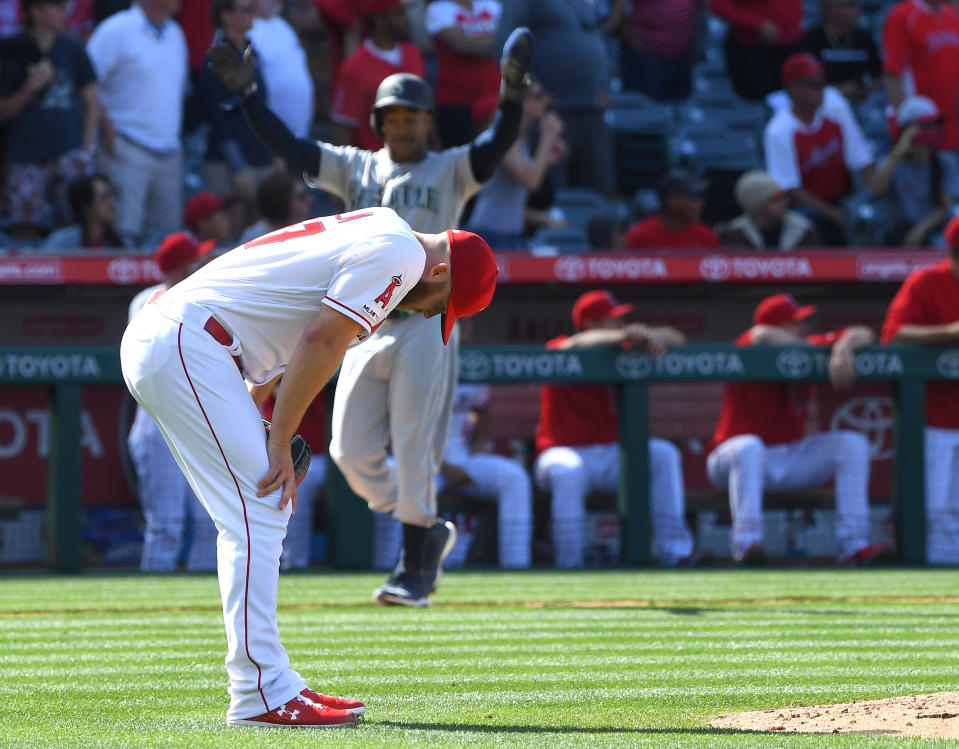Cody Allen's fall from star closer to the waiver wire shows how fickle relievers can be
Just two years ago, Cody Allen was the class of baseball’s closers. Although he never made an All-Star game, he and Kenley Jansen were the only relievers to post at least 1 WAR each year from 2013-17.
With a sparkling 2.94 ERA in 2017 and a 32.6 percent strikeout rate and 7.5 percent walk rate to match, Allen looked like he was headed for a big payday. However, after a tough 2018 where a 4.70 ERA left him below replacement level, Allen had to settle for a one-year, $8.5 million deal with the Los Angeles Angels to reestablish his value.
To put it simply: Things have not gone as planned this year. Allen’s ERA ran north of 6, and he was removed from the closer role within a month. Now, less than three months into his stint with the Angels, the team has designated him for assignment.
Allen’s rapid struggles are a microcosm of just how fickle relievers can be.
What went wrong for Cody Allen?
Allen’s fall from grace was precipitous, even if there were signs that he might not return to his top form after hitting 30 years old.
From a very basic level, Allen could not stop walking batters or giving up home runs, which are the two worst things a pitcher can do. Allen nearly walked a batter per inning (20 in 23 frames), and his nine bombs allowed are already two short of his career-worst mark.
But even beyond those stats, his underlying numbers have also been career worsts, outside of his brief debut in 2012. Allen’s average fastball velocity (92.3 mph) was his worst yet and led to low marks in contact rate (75.5 percent), swinging strike rate (9.6 percent) and percent of swings on pitches outside the strike zone (27.6 percent).
The damage could have even been worse, as a .259 batting average on balls in play and 89.2 percent left on base rate kept his ERA (6.26) from matching his sky-high 8.33 FIP.
It’s too soon to completely write off Allen, who only turned 30 in November, but the once-reliable closer is gone. With the Angels finding reliable alternatives in Hansel Robles, Ty Buttrey and Cam Bedrosian, they didn’t want to roll the dice anymore and put their playoff push in any more peril than it already is.

What does this say about relievers overall?
There are plenty of reasons why seven-time All-Star Craig Kimbrel wasn’t signed until June this year. Teams weren’t eager to give up draft pick compensation to sign him, but more importantly, they weren’t willing to meet his agent’s demands for a nine-figure, five-year contract.
Teams just can’t count on relievers to be consistent for so many years, especially after they reach their prime. Allen in the mid-2010s was a great outlier compared to the rule.
Although Jansen and Aroldis Chapman landed five-year deals worth a combined $166 million two offseasons ago, they may be the last of a generation to earn such big deals. No reliever this winter got more than a three-year deal with former All-Stars Andrew Miller and David Robertson getting two years.
Allen is yet another in a long line that shows it doesn’t always pay to sign closers in free agency, although you’re certainly better off with short-term deals. Things may not have worked out for the Angels, but at least they’re not saddled with years of dead money like their cross-town rivals.
More from Yahoo Sports:

